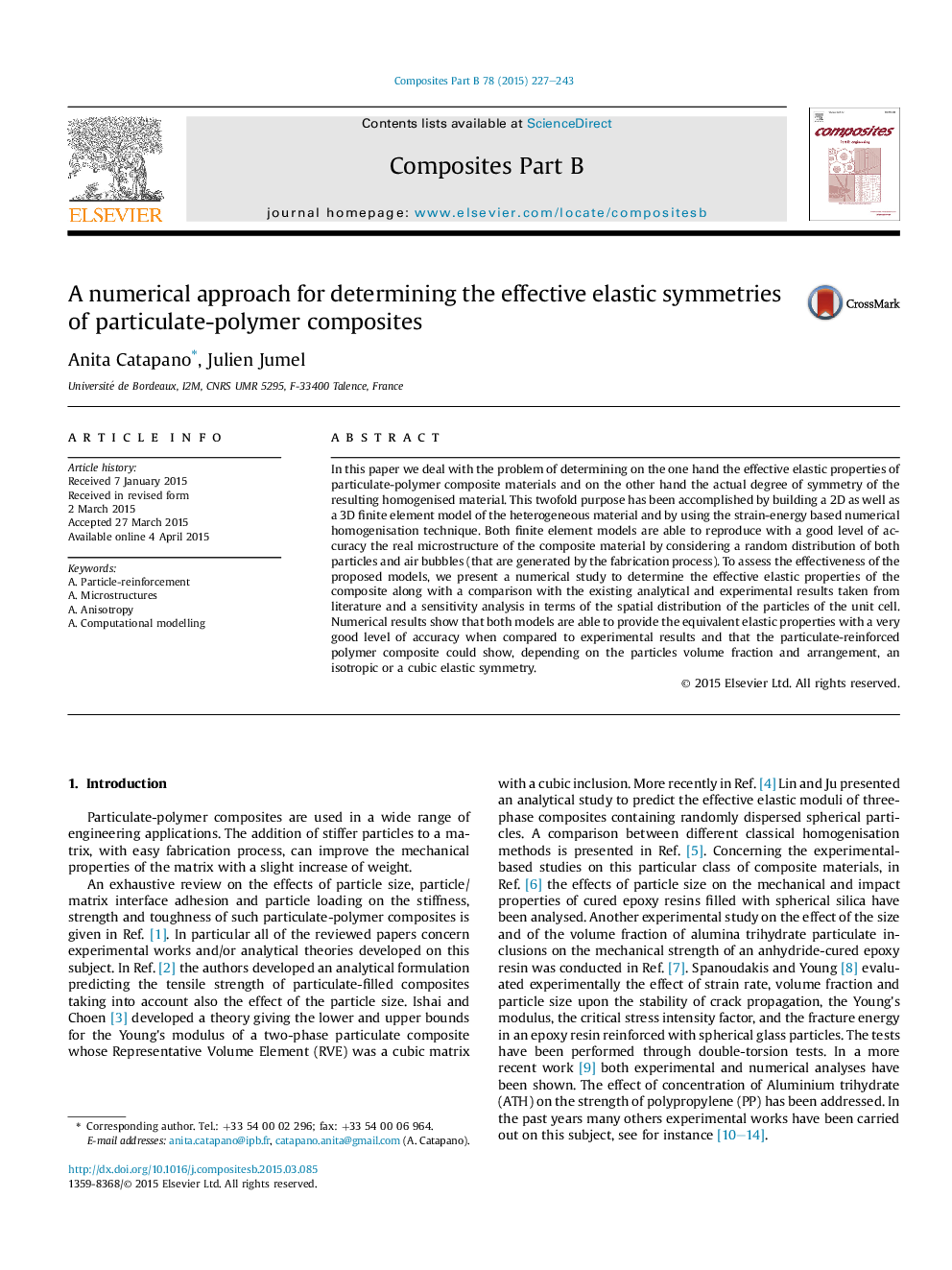| Article ID | Journal | Published Year | Pages | File Type |
|---|---|---|---|---|
| 817413 | Composites Part B: Engineering | 2015 | 17 Pages |
Abstract
In this paper we deal with the problem of determining on the one hand the effective elastic properties of particulate-polymer composite materials and on the other hand the actual degree of symmetry of the resulting homogenised material. This twofold purpose has been accomplished by building a 2D as well as a 3D finite element model of the heterogeneous material and by using the strain-energy based numerical homogenisation technique. Both finite element models are able to reproduce with a good level of accuracy the real microstructure of the composite material by considering a random distribution of both particles and air bubbles (that are generated by the fabrication process). To assess the effectiveness of the proposed models, we present a numerical study to determine the effective elastic properties of the composite along with a comparison with the existing analytical and experimental results taken from literature and a sensitivity analysis in terms of the spatial distribution of the particles of the unit cell. Numerical results show that both models are able to provide the equivalent elastic properties with a very good level of accuracy when compared to experimental results and that the particulate-reinforced polymer composite could show, depending on the particles volume fraction and arrangement, an isotropic or a cubic elastic symmetry.
Related Topics
Physical Sciences and Engineering
Engineering
Engineering (General)
Authors
Anita Catapano, Julien Jumel,
